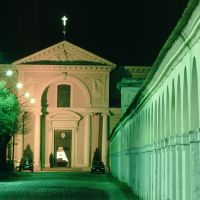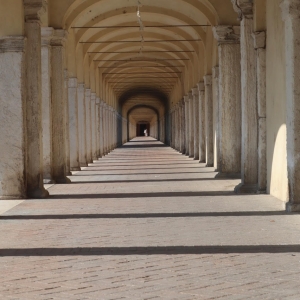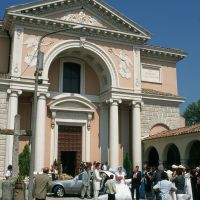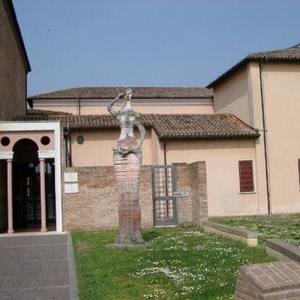
Church of S. Maria in Aula Regia
Comacchio
Where:
Contacts
The Sanctuary of S. Maria in Aula Regia is one of the oldest buildings in the historic center of Comacchio. Already existing in 956. Various opinions would have it derived from a monastery built in the fifth century. Between the twelfth and thirteenth centuries a coenobitic community called Santa Maria occupied the monastery where St. Romualdo, founder of the order of the Camaldolese Benedictines also lived.
After being abandoned by the monks in the early 1200s, the church was reopened for worship by Bishop Mainardino de 'Contrari who in 1499 decided to restore it. In the second half of the sixteenth century, favored by Duke Alfonso II, the Capuchins built their convent there. The church was enlarged with the extension of the central nave in 1655; in 1886 the facade was rebuilt, later other restorations took place until today. In 1923 the consecration took place and in 1968 it again underwent restoration and embellishment of the facade and interior. The neoclassical style facade dates back to 1888, the interior has a single nave with cross vaults.
The cult of the Madonna dei Cappuccini is very ancient, it seems to date back to the year 1000. Tradition has it that this cult was imported from the East around 750.
The statue of the mother of God was crowned and proclaimed patroness of the city on 31.12.1619 by Bishop Alfonso Sacrati and to give greater possibility of devotion to the citizens, in 1647, the portico was built consisting of 142 round arches supported by stone pillars of Istria and about 400 meters long that connects the church to the city. "
THE PORCH
Built in 1647-48, it connects the convent with the town, the Cathedral, and the civic tower. In 1647 Comacchio escaped the danger of flooding from the Primaro which had broken the banks. The cardinal legate Stefano Donghi for the escaped danger had the majestic loggia of 142 arches erected.
The 142 arches make up a "road covered by a long line of arcades ... which defend the passengers from the north wind". The area was called "new land" heals an abandoned land-environment, deserted and impassable in summer and winter. It is said that in 1593, the friars asked for the removal of the Casone di Colosso due to the scandal that the women guests of the Casone caused.
The portico is still spectacular today due to the perspective that is recorded coming from the city center.
The two entrances built in 1950 to allow motorized vehicles to pass have canceled four arches.
In the early 1900s, needs arose to make room for industrial activities.
Behind the portico there are two activities, one is that of the mill and the other of the manufacture of fish. A rehabilitated space and in any case that did not impact on the prospect and presence of the sanctuary.











